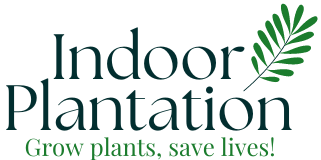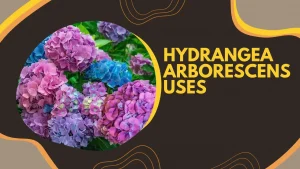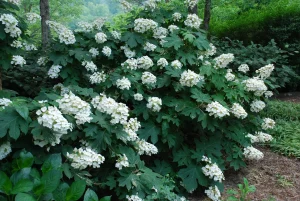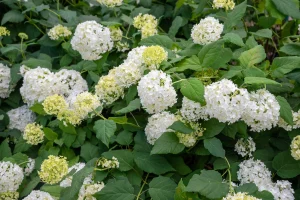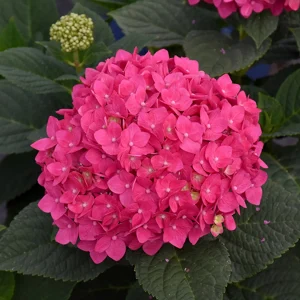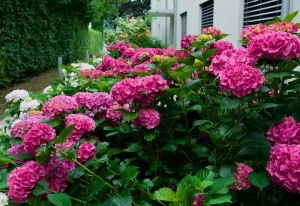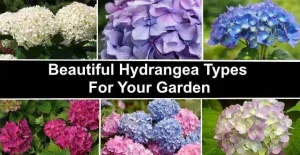Hydrangea Arborescens Uses
Smooth Hydrangea, or Hydrangea arborescens, is a well-liked plant because of its numerous advantageous applications and exquisite blossoms. Here’s a thorough examination of its uses.
Use in Ornamental
Many people cultivate Hydrangea arborescens for its beautiful flowers. Large clusters of white flowers make it a favourite for landscaping and garden décor. It gives an air of sophistication to any outdoor area, whether it is utilised as freestanding specimens, in flower beds, or as borders.
Herbal Remedies
Because of its diuretic qualities, Hydrangea arborescens has been employed in traditional herbal therapy. It is thought to support and treat several urinary problems and ailments, including kidney stones and bladder infections. Herbal supplements frequently contain the plant’s roots, also referred to as “seven barks.”
Control of Erosion
Soil conservation is a fascinating new use for Hydrangea arborescens. Particularly on hillsides and slopes, the plant’s extensive root system aids in preventing soil erosion. It is a great option for places that are prone to erosion because it stabilises the soil.
Support for Pollinators: Hydrangea arborescens is excellent for providing support for pollinators such as butterflies and bees. You can improve the health of the local ecology and encourage biodiversity in your garden by growing this species.
Arrangements of Cut Flowers
Hydrangea arborescens is very frequently used to make exquisitely cut flower bouquets. Its durable blooms are ideal for indoor décor and special occasions like weddings.
In landscaping, Hydrangea arborescens.
Modern landscaping benefits greatly from the use of Hydrangea arborescens, especially in regions where big, vibrant blooms with little upkeep are sought. It is a great option for a variety of garden designs due to its resilience to several soil types, including acidic soils, and capacity to grow in both sun and partial shade. It is frequently used by landscapers to create visually arresting borders that bloom profusely in the summer by bulk plantings or incorporating it into hedges.
Habitat for wildlife
Apart from its aesthetic significance, Hydrangea arborescens offers a home for several wildlife species. While the flowers draw bees, butterflies, and other pollinators, the dense foliage and structure provide cover for small birds and insects. As a result, it is essential to preserving the wellbeing of your local ecology.
Water-smart Gardening.
Hydrangea arborescens is a standout water-efficient plant in light of the increased interest in sustainable gardening techniques. While it thrives in well-watered environments, it can withstand periods of dryness once established, which makes it a good option for low-water gardens or regions that see periods of dry weather.
Enhancement of soil.
Enhancement of soil quality is also facilitated by the root system of the plant. Gradually enriching their soil, gardeners can plant Hydrangea arborescens. Its leaves can be let to fall and degrade, returning nutrients and organic matter to the soil to support the establishment of healthy plants.
Applications in the Floral Industry Hydrangea arborescens is prized greatly in the floral industry, even outside of gardens and landscapes. Fresh and dried blossoms are commonly utilised in floral arrangements. The flowers are popular in bouquets and centrepieces for homes, workplaces, and celebrations since they hold their beauty for a long period. The flowers’ application in personalized floral arrangements is further increased by their capacity to be dyed multiple colors.
Healing Gardens.
Creating therapeutic gardens is another expanding use for Hydrangea arborescens. This plant, which has a relaxing aesthetic appeal, is frequently used in healing and relaxation areas, including hospital gardens, wellness centres, and retirement homes. It’s ideal for creating calm spaces because of its low maintenance requirements and delicate attractiveness.
Hydrangea arborescens in projects involving restoration.
Hydrangea arborescens is also remarkably used in rehabilitation work. It’s perfect for rehabilitating disturbed regions like old mining sites, building zones, or overgrazed land because of its capacity to stabilise soil and flourish in difficult environments. Over time, ecosystems can be restored thanks to its capacity to adapt and harden, which enhances soil structure and decreases compaction.
Making screens for privacy.
Both homeowners and garden enthusiasts can benefit from using hydrangea arborescens as an efficient privacy screen. This plant, with its rich leaves and blossoms, can provide a natural barrier when planted in rows, protecting your outdoor living space while also adding visual interest to your landscape. A Hydrangea arborescens hedge, as opposed to typical fence, gives your environment a live, breathing aspect that delightfully changes with the seasons.
Utilisation of Hydrangea arborescens in Commercial Settings
The Horticultural Sector.
In the horticulture sector, Hydrangead arborescens is frequently utilised as a beautiful accent in both residential and commercial settings. One of the more well-liked options for gardeners, this plant is marketed by garden centres and nurseries for its dependability in blooming and ease of maintenance. Some of the plant’s varieties—like ‘Annabelle’ and ‘Incrediball’—are frequently included in landscaping catalogues and are especially well-known for their enormous bloom clusters.
Sustainable Landscape Options.
Hydrangea arborescens is frequently suggested as a sustainable substitute for plants that require more water, fertiliser, or pesticides by groups or towns that are focused on eco-friendly landscaping. It’s a great option for green efforts because of its natural habitat growth and climatic adaptation. These qualities lessen the requirement for chemical treatments.
Growing for Profit: A Cash Crop.
It is possible to grow hydrangea arborescens as a cash crop in areas with significant floral industries. Flower growers profit from its popularity by providing florists, event coordinators, and wedding planners cut flowers. Additionally, dried hydrangea blossoms are offered for sale as seasonal décor elements, especially for weddings when Hydrangea arborescens is preferred for its classic elegance.
Climate Resilience of Hydrangea arborescens.
The possible benefit of Hydrangea arborescens for fostering climate resilience is one of its frequently disregarded applications. Plants that can withstand a range of weather conditions, including droughts, severe rains, and extremely high temperatures, are essential for landscapes as climate change accelerates. These varied settings are ideal for the growth of Hydrangea arborescens. Once established, it’s a great option for gardens that can resist erratic weather patterns due to its tolerance of both wet and dry environments.
Since hydrangea arborescens require little upkeep, they are a green choice for homeowners who wish to use less water and fertiliser, lessen their carbon impact, and use fewer irrigation systems.
Use of Education in Public Gardens
For educational purposes, hydrangea arborescens is frequently featured in public gardens and botanical parks. These plants can be used into gardens to benefit nearby ecosystems as live examples of native species. By teaching visitors to public gardens how to grow and maintain Hydrangea arborescens in their own yards, more people will be aware of sustainable gardening techniques.
Furthermore, the plant is occasionally included in educational seminars that highlight native plant species and the need of pollinators. Hydrangea arborescens is frequently shown in garden beds at public gardens to highlight its adaptability and richness.
Hydrangea arborescens: Benefits to Mental Health and Overall Wellness.
Research has indicated that integrating Hydrangea arborescens into therapeutic environments can have positive effects on mental and emotional wellbeing. Research has shown that being outside, especially in areas with lots of flowering plants (like Hydrangea arborescens), can help lessen levels of stress, anxiety, and depression. The plant is a great option for healing gardens or meditative landscapes because of the delicate, calming tones of its blossoms, which can range from white to light pink in certain kinds.
Using Hydrangea arborescens indoors.
Although its main application is outdoors, Hydrangea arborescens can also be found indoors. The plant’s cut blossoms are frequently carried inside to enliven living areas. Furthermore, dried flowers are often used in crafts and interior design. A little bit of nature can be brought inside with Hydrangea arborescens blooms, encouraging calm and relaxation.
Uses in Culture and Symbols.
Hydrangeas, especially Hydrangea arborescens, are revered as flowers of thanks and contrition in several civilisations. Their blossoms are used in festivals and ceremonies, and they are frequently presented as presents to convey deep sentiments. Because roses change colour according to the pH of the soil, they are associated with the rainy season in Japan and represent the moods of life.
Hydrangea arborescens and Preservation of the Environment.
Hydrangea arborescens is useful and ornamental, but it can also support larger environmental conservation initiatives. The plant is perfect for reforestation and the restoration of natural habitats because it can grow in a variety of environments. Restoring local ecosystems in deforested or degraded places can be achieved by planting native species such as Hydrangea arborescens. In addition to providing food for pollinators and stabilising the soil to avoid erosion, its strong root structure also promotes biodiversity.
Urban parks, rooftop gardens, and living walls are examples of green infrastructure projects that benefit from including Hydrangea arborescens to lower air pollution and enhance urban heat islands. By removing carbon dioxide from the atmosphere, these plants can also help with carbon sequestration, which is an important aspect of the fight against climate change.
Hydrangea arborescens in the Control of Water.
Hydrangea arborescens is suited for damp settings, making it a useful addition to water management systems. The plant aids in water absorption in rain gardens and wetlands, lowering the risk of flooding and lessening the effects of intense downpours. It is crucial to sustainable urban design because it filters contaminants from stormwater runoff when used in bioswales and artificial wetlands.
Homeowners can avoid waterlogging and enhance the aesthetics of their environment by planting Hydrangea arborescens in low-lying yard areas that gather water. Because of its innate ability to withstand damper environments, the plant flourishes in areas where other plants could struggle.
Economic Worth and Social Effects
Communities can gain financially from promoting Hydrangea arborescens in public areas. This plant draws crowds to parks and gardens where it is grown, boosting tourism and bringing in money for community markets that sell dried or cut flowers, botanical tours, and garden events. The plant’s widespread use in the flower industry also presents chances for nearby companies, including as nurseries and florists, to profit from consumer demand.
Moreover, educational programs centred around Hydrangea arborescens can impart important information about native plants and environmentally friendly gardening techniques. Hydrangea arborescens is a useful plant to include in programs that teach about pollination, biodiversity, and the value of protecting native species in community workshops, garden clubs, and educational settings. More knowledge and responsibility for the environment are fostered by this.
Research in Science and Possible New Applications
Researchers looking into novel uses for Hydrangea arborescens have become interested in the plant in recent years. Its phytochemical qualities are being researched for possible application in herbal medicine and natural treatments, specifically for the treatment of inflammatory illnesses and the enhancement of kidney health. These investigations may yield novel approaches to utilising the plant’s therapeutic properties, thereby extending its influence beyond customary applications.
Furthermore, current studies in horticulture and landscape architecture emphasise climate resilience. A common model species to plant in regions vulnerable to droughts, floods, or shifting environmental circumstances is Hydrangea arborescens. Because of its adaptability, scientists will be interested in studying this plant for many years to come.
